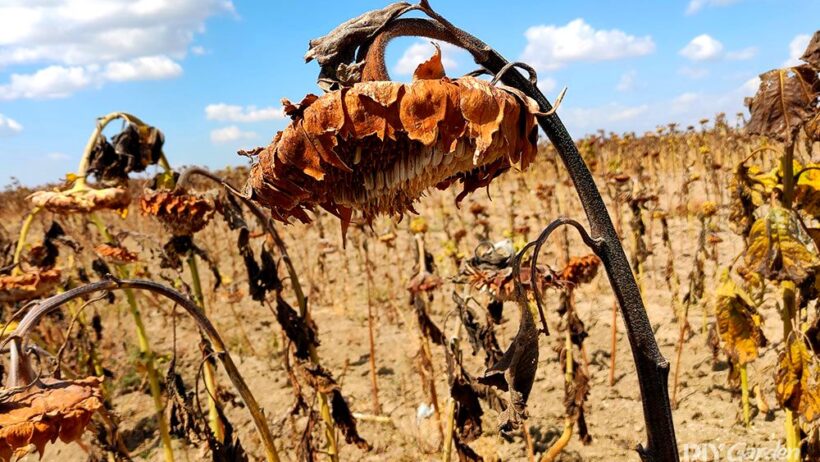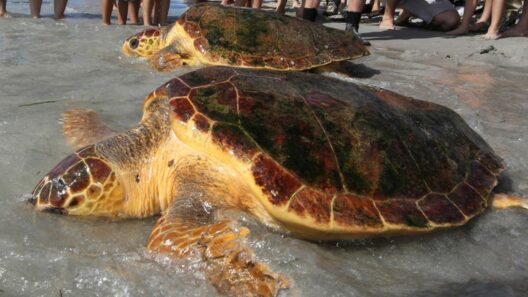New Caledonia, an archipelago nestled in the South Pacific, presents a fascinating case study of a unique ecosystem that faces dire consequences due to climate change. With its rich biodiversity and endemic species, this region is not only a treasure trove of ecological diversity but also a delicate balance that is increasingly jeopardized by global warming. But have you ever pondered what the future holds for such an exquisite locale under the relentless march of climate change? What challenges lie ahead in the preservation of its irreplaceable natural heritage?
This French territory is home to the world’s largest coral reef system, second only to Australia’s Great Barrier Reef, and an array of flora and fauna that are found nowhere else on Earth. The region itself is characterized by its lush rainforests, savannas, and a complex geological framework composed largely of ultramafic soils. These unique soils, rich in nickel and other minerals, play a crucial role in shaping the biodiversity of New Caledonia, promoting the growth of specialized vegetation that has adapted to these conditions over millennia.
However, the environmental equilibrium is being disrupted. Rising sea temperatures, resulting from global warming, pose a significant threat to coral reefs, leading to widespread coral bleaching. Coral reefs are not just beautiful; they are vital ecosystems that support a myriad of marine life. As the symbiotic relationship between coral and the algae that inhabit them deteriorates due to heightened water temperatures, the vibrant colors fade, and the coral structures become more susceptible to disease and mortality.
Moreover, coastal erosion has become a pressing issue for New Caledonia’s fragile ecosystems. The island’s coastlines are being transformed as rising sea levels erode sandy beaches, threatening habitats for both terrestrial and marine organisms. Mangrove forests, which act as critical buffers against storm surges and provide habitat for nursery fish, are also at risk. With climate change leading to intensified weather events, these natural defenses are systematically undermined, prompting questions about the ability of wildlife to adapt to the dramatically changing landscape.
Inland, the ramifications of climate change extend to the iconic forests of New Caledonia. These forests are home to numerous endemic species, including the critically endangered New Caledonian crow, renowned for its advanced cognitive abilities. An increase in temperature, coupled with shifting rainfall patterns, results in unpredictable seasons that affect both plant growth and animal behavior. If plants flower too early or animals shift their foraging patterns in response to climate fluctuations, the intricate relationships between species may falter, causing cascading ecological consequences.
Further complicating this catastrophe is the factor of invasive species. While New Caledonia’s isolation has bred an ecosystem rich in unique species, it has also rendered them particularly vulnerable to invasions by non-native flora and fauna. As climate change alters habitats, invasive species are increasingly finding footholds in these ecosystems, outcompeting indigenous species for resources and further threatening New Caledonia’s ecological integrity.
The societal implications of climate change in New Caledonia cannot be overlooked. The indigenous Kanak people, whose culture is intrinsically connected to the land and sea, are facing existential threats as their traditional lifestyles are compromised. Disruption of natural resources affects not just biodiversity but also cultural identity and community resilience. As rising seas encroach upon their coastal territories, questions of displacement and land rights become increasingly pressing. How will the traditional ecological knowledge possessed by the Kanak people be preserved in the face of such overwhelming changes?
To address these multifaceted challenges, a concerted effort is required. Mitigation strategies must be implemented to reduce carbon emissions while simultaneously promoting sustainable practices. These strategies can include the restoration of coral reefs through reef rehabilitation projects, community-led conservation initiatives, and the establishment of marine protected areas that safeguard critical habitats from deleterious human activities.
Furthermore, fostering awareness and engaging local communities in conservation efforts are paramount. Public education campaigns can galvanize support for sustainable practices, emphasizing the importance of preserving New Caledonia’s unique biodiversity. Collaborative partnerships between government agencies, non-profits, local communities, and global organizations can facilitate knowledge sharing and resource allocation, creating robust frameworks for adaptation and resilience.
As we confront the realities posed by global warming, the plight of New Caledonia serves as a microcosm of the broader environmental crisis our planet faces. Every ecosystem is interconnected, and the repercussions of one region’s struggles resonate globally. The question remains: how will we collectively rise to the challenges presented by climate change to safeguard our planet’s rich biodiversity? Time is of the essence, and immediate action is essential to ensure that future generations inherit a world where unique ecosystems can continue to thrive.
In conclusion, New Caledonia stands as a poignant reminder of our duty to protect and preserve the delicate balance of nature. A responsibility that transcends geographical boundaries and demands a unified response. It is not merely about protecting a picturesque locale; it is about safeguarding the intricate web of life that sustains us all. What choices will you make today to contribute to this crucial cause? The future is in our hands.







